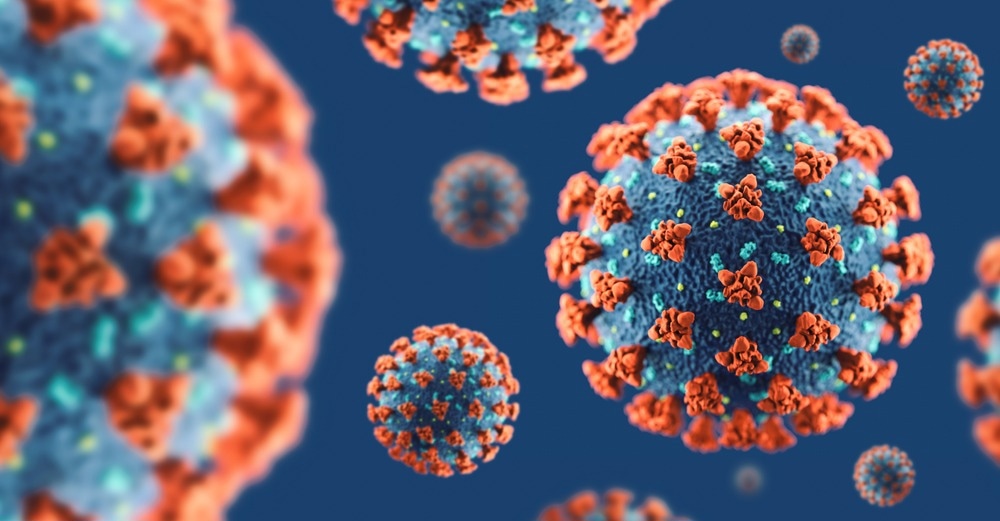Coronavirus disease 2019 (COVID-19), caused by severe acute respiratory syndrome coronavirus type 2 (SARS-CoV-2) has severely affected the global economy and health systems. Consequently, there have been concerns about manufacturing personal protective equipment (PPE) based on antimicrobial fibers to prevent the transmission of hazardous pathogens.

Study: Questioning ZnO, Ag, and Ag/ZnO nanoparticles as antimicrobial agents for textiles: Do they guarantee total protection against bacteria and SARS-CoV-2? Image Credit: neative/Shutterstock.com
In an article published in the Journal of Photochemistry and Photobiology B: Biology, antimicrobial cotton fabrics based on silver (Ag), zinc oxide (ZnO), and Ag/ZnO nanoparticles were developed. Their antimicrobial activity was evaluated against Staphylococcus aureus (S. aureus) and Escherichia coli (E. coli), along with antiviral activity against SARS-CoV-2 and photocatalytic activity.
The results revealed that the prepared fabrics based on antimicrobial nanoparticles were active against the bacteria. However, these fabrics could reduce only a part of SARS-CoV-2 for a short time. Here, only viral surface particles were damaged, while the RNA of SARS-CoV-2 remained intact.
SARS-CoV-2 and Antimicrobial Nanoparticles
SARS-CoV-2 has an envelope structure and contains a single positive-stranded RNA as its genetic substrate. SARS-CoV-2 has the potential to remain actively infectious on the surface of raw materials and fabric used in the preparation of personal protective equipment (PPE).
Consequently, several efforts were made to develop antimicrobial functional materials that can disable the SARS-CoV-2 rapidly. Although cotton fabrics intrinsically lack antimicrobial capacity, surface treatment of these materials with antimicrobial nanoparticles can help realize biologically safe PPEs.
ZnO and Ag can inhibit the growth of a wide range of microorganisms and are used in academic and industrial research. Hence, owing to their intrinsic antimicrobial property, they can destroy various bacteria and viruses due to the generation of reactive oxygen species (ROS) induced by the metal ion release.
Nanomaterials have a size range between 1 and 100 nanometers. The antimicrobial nanoparticles demonstrated broad-spectrum antibacterial properties against both Gram-positive and Gram-negative bacteria. For example, previous studies mentioned that ZnO-based antimicrobial nanoparticles were active against S. aureus, and Ag-based antimicrobial nanoparticles exhibit concentration-dependent antimicrobial activity against E. coli and Pseudomonas aeruginosa.
The mechanism of action of the antimicrobial nanoparticles adheres to one of three models: metal ion release, oxidative stress induction, or non-oxidative mechanisms. These three types of mechanisms can co-occur. Previous studies have proposed that Ag-based antimicrobial nanoparticles can promote the neutralization of the bacterial membrane’s surface charge and changes its penetrability, ultimately leading to bacterial death.
ZnO, Ag, and Ag/ZnO Antimicrobial Nanoparticles Against SARS-CoV-2
In the present work, silver (Ag), zinc oxide (ZnO), and Ag/ZnO nanoparticles were fabricated via sonochemistry and fixed on the surface of the cotton fabric. The research finding revealed that these nanoparticles did not show effective antimicrobial activity against SARS-CoV-2 when integrated into cotton fibers.
On the other hand, the cotton fibers surface-coated with fabricated nanoparticles sowed antibacterial properties against S. aureus (Gram-positive bacteria) and E. coli (Gram-negative bacteria). While Ag-based antimicrobial nanoparticles fixed on cotton fibers showed a bactericidal effect against E. coli, the ZnO-based antimicrobial nanoparticles showed important effects on inhibition diameter against S. aureus.
The Ag-based antimicrobial nanoparticles promoted the release of Ag+ ions and ROS-induced oxidative stress. Furthermore, the interaction of Ag+ ions with transport proteins interfered in the replication of DNA or transcription and irreversibly damaged the bacterial cell via electrostatic interaction of Ag+ ions with negatively charged bacterial membrane.
Additionally, ROS disrupted the bacterial cell membrane by inducing oxidative stress, destroying the biomolecules involved in the make-up of the cell membrane. Furthermore, Ag/ZnO-based antimicrobial nanoparticles showed a higher inhibition zone against E. coli than ZnO or Ag-based individual counterparts.
Conclusion
Overall, cotton fabrics coated with Ag/ZnO-based antimicrobial nanoparticles showed a higher photoactivity performance than their Ag and ZnO counterparts. Moreover, the sonochemical treatment of ZnO nanoparticles with Ag nanoparticles reduced the optical bandgap of the former.
The content of antimicrobial nanoparticles affected the bactericidal activity of cotton fabric. The cotton fibers coated with Ag, ZnO, and hybrid Ag/ZnO antimicrobial nanoparticles reduced the number of SARS-CoV-2 virions by 10 to 20% after 15 minutes of contact.
Moreover, the data obtained from molecular biology suggested that prepared antimicrobial nanoparticles disrupted the structural components on the surface of infectious SARS-CoV-2 particles. However, the viral RNA remained unaffected, indicating inefficient antimicrobial activity against SARS-CoV-2.
Despite the indication by international regulatory agencies that disinfectant substances could inactivate SARS-CoV-2, the prepared Ag, ZnO, and hybrid Ag/ZnO antimicrobial nanoparticles did not show the sufficient antimicrobial capacity of cotton fibers to inactivate SARS-CoV-2 virions. Furthermore, the content of the ZnO antimicrobial nanoparticles affected the optical bandgaps of hybrid Ag/ZnO nanoparticles and the bactericidal activity of cotton fibers against S. aureus.
Reference
Silva, DJD., Duran, A., Cabral, AD., Fonseca, FLA., Bueno, RF., Rosa, DS. (2022). Questioning ZnO, Ag, and Ag/ZnO nanoparticles as antimicrobial agents for textiles: Do they guarantee total protection against bacteria and SARS-CoV-2? Journal of Photochemistry and Photobiology B: Biology. https://www.sciencedirect.com/science/article/pii/S101113442200152X
Disclaimer: The views expressed here are those of the author expressed in their private capacity and do not necessarily represent the views of AZoM.com Limited T/A AZoNetwork the owner and operator of this website. This disclaimer forms part of the Terms and conditions of use of this website.